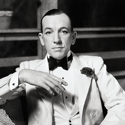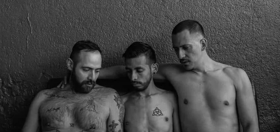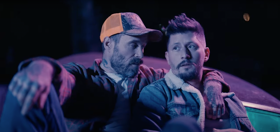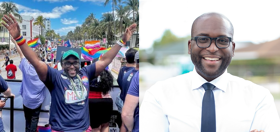
We’re coming up on a grim anniversary–35 years since the first reported cases of what we would come to know as AIDS. To mark the occasion, the Bay Area Reporter has interviewed some high profile survivors about their experiences, their memories and what might lie ahead. It’s required reading for anyone who’s been touched by the crisis–which is everyone.
Related: “How to Survive a Plague” Explores The Passion And Progress Of Early AIDS Activists
One of the most important milestones of the last 35 years was the introduction of cocktails in the mid-90s. Following that innovation, death rates–which had been skyrocketing year after year– immediately took a nosedive.
That followed a decade of experimental treatments, many of which had no effect or actually made suffering worse. But there was virtually no knowledge about how the disease worked, and it was spreading so fast that doctors were desperate for any form of treatment. What’s more, officials in the Reagan administration did as little as they could to address the crisis.
How about we take this to the next level?
Our newsletter is like a refreshing cocktail (or mocktail) of LGBTQ+ entertainment and pop culture, served up with a side of eye-candy.
Activist Cleve Jones recalls bringing the AIDS quilt to Washington in the mid-90s, when the Clinton administration was finally starting to take action to save lives.
“I talked to President Clinton on how my friends were now thriving and asking him to make sure these drugs would be available to everybody,” he tells the Bay Area Reporter.
In 1994, he suffered an infection that he expected to take his life, but the cocktails saved him.
Related: WATCH: Elizabeth Taylor’s Fight To Raise AIDS Awareness Changed History
Gabriel Quinto talks about being an early test subject. He also expected to die, and sold all of his belongings in preparation for the end. The drugs that he took saved him, but also had devastating side effects.
“These drugs were not tested for people of color and the side effects could make you feel worse than the disease itself,” he explains. “Many of my friends could not take these drugs and gave up. … The current medications have not raised my number of T cells above 150, so consequently I have good days and bad days when I need to rest.”
Terry Beswick, who runs the GLBT Historical Society, holds regular events and organizes exhibits to reflect on the last three decades. He cites the crisis as having taught the LGBTQ community a hard lesson about organizing and establishing leadership, one that ultimately helped the fight for civil rights but at an unbearable cost.
“We need to meet people where they are at and base public health policy on science rather than morality,” he says. “My big goal is to build a bigger LGBT museum (than the one in the Castro), complete with an educational and cultural center so we can tell the story of AIDS more effectively and learn not to make the same mistakes we made 20, 30 years ago.”
Related: Six Pioneering Gay Writers Who Helped Bring HIV/AIDS To The American Forefront
“I think marriage equality came out of our struggle with AIDS. For my generation of radical activists, marriage was not on any of our priority lists,” Jones says. But when partners died and there were no legal protections, “suddenly that little piece of paper became critically important. And that’s why working class gays and lesbians lined up when Mayor Gavin Newsom opened up City Hall in 2004 so they could get married, despite flack from the political establishment.”
Gavin Newsom, it’s worth pointing out, recently sent out an email to supporters about that time. Back in 2004, when he issued marriage licenses, most of the Democratic Party abandoned him.
There was only one high-profile politician willing to work with him during that time: Hillary Clinton.


















Kangol
“One of the most important milestones of the last 35 years was the introduction of cocktails in the mid-90s.”
Anti-retroviral dr+g cocktails.
We’ve come a long, long way since those days.
Kangol
“One of the most important milestones of the last 35 years was the introduction of c0cktails in the mid-90s.”
Anti-retroviral drug c0cktails.
We’ve come a long, long way since those days.
Billy Budd
My dream is that Big Pharma will begin spending their billions of dollars in research trying to find a DEFINITE cure, and not treatments that enslave us to take meds for the rest of our lives.
Stache
Here’s to hoping when the 50th anniversary comes up will be reflecting on this in the past tense.
Brian
AIDS was self-inflicted.
Dinodogstar
@Brian: @Brian: Brian, I’m bothered by the hatefulness and disrespectful comment, and I’d ask you to remove it. If you had attempted to say something smart, pithy and insightful, you should have expounded on that point more clearly.
Dinodogstar
@Brian: @Brian: It was a difficult thing to come out during the most fever-pitched time of the AIDS crisis, which is far from over. There are a million stories worth telling about lgbt people, and within the framework of the early-to-mid 80s, AIDS discovery period, the collective experiences are even more heightened and broad given the time considered. I’d love to read an article about how 40 year old people, +/- a half-decade, were shaped and perceived themselves and the lgbt community through the lens of red-ribbon-reflecting mirrored glasses.
Dinodogstar
(That last post was not intended to be a reply, and I’m not sure why it reads as such.)
I fear that the zeitgeist of the unstoppable lgbt-pride period we live in, will do what the negative after-effects of ‘pride’ tends to do: blind us to our shortcomings, unbridled confidence, and less-cautious actions.
In the American south especially, the rate of new HIV infections has shot up, as we are less-aware of the issue, and have lessened our fear of the virus, perhaps thinking that, though it HAS in fact become more ‘manageable’, it then is less concerning. In cities like Columbia, SC, El Paso, Texas, and Jackson, MISS, it’s said a fifth of the gay male community is infected with the virus. (logo / newnownext dot com did a piece on this, “New Map Reveals Soaring HIV Rates Among Gay Men in the South”. )
And it certainly seems that the very same reasons that contributed to the ignoring and ignorance of the illness, because the people being infected and dying, gays, drug users, sex workers, the collective ‘bad’ people, were well-stated by the larger culture to be expendable and not worth the time or effort of the country, nor the President in-charge then. Now, gay porn sites often have ‘barebacking’ video categories, and ‘safe sex’ sadly is wrongly approached as outdated and irrelevant, as the term, ‘yuppie’ or “valley girl”. And the gay media certainly needs to own the fact that they mention HIV / AIDS / Safe Sex almost never now, though the AIDS crisis itself is FAR from over, or nearly ‘cured’. ” Silence = Death, Action = Life. ” Know it, live it.
Brian
@Dinodogstar: Male homosexuality has been around for millions of years. There is nothing new about it.
What is new is airline travel that brings men from around the world to a few locations for promiscuous sex with each other under the “pride” banner. Spare me the pride.
onthemark
@Brian: THAT’S quite a theory. Let’s blame AIDS on… airline deregulation!
Violent Rainbow
Ok I’m all for HIV positive people not being treated like pariahs but can be please stop trivializing it? It’s a disease with no cure that will eventually kill all who it infects, it’s not a joke and it should be taken seriously.
Stache
@Violent Rainbow:I have no issue with anyone negatively commenting but clearly you didn’t even bother reading the article or comments. Go f*ck off with your soapbox trolling. You’re only here to stir up shit.
Stache
@onthemark: I don’t even bother reading or responding anymore to our resident tin foil hat troll ie “Brian”. You just know ahead of time whatever it says it’s going to be some crazy shit. I have a Brian filter I guess. Lol
o.codone
this is just a hillary ad. how did she support newsome when she wasn’t even for gay marriage until 2013?
onthemark
@Stache: (sigh) I guess I need one of those Brian filters, do they have them on eBay? 🙂
@Violent Rainbow: “It’s a disease… that will eventually kill all who it infects…” – All? Definitely NOT true nowadays, since with modern treatment most live normal lifespans. But that’s not in any way to deny side effects or to trivialize it.
Unfortunately, with the astronomical rate of smoking among gay men (40% vs. 15% in the general population), the most common causes of death of among gay men over 50 are much more predictable than HIV.
ChuckF
I lost my partner of 18 years to AIDS and I’ve lived with HIV since 1978. I credit Steven Follansbee my Kaiser doc for keeping me alive. Five years ago I fell down twice in two days. After months of being forgetful and three spinal taps, two MRIs and countless blood tests he surmised that HIV had gotten into my spinal column. He personally took the results of my final spinal tap to Stanford that has more sophisticated measuring devices and found he was right. He put me on new meds and today I’m finishing a novel and writing a play with no intention of dying anything time soon.
rhino79
@ChuckF: Wow, Chuck… I have no idea who you are, but your comment put a smile on my face. You are one tough motherf**ker. If anyone can be called a survivor, it’s you!
abnerbha
If people are going to be promiscuous whether it’s straight or gay & not use condoms, then if they get a Venereal Disease (VD), it’s their fault-they knew the risks but chose to take them. Most smokers except for those suing the tobacco companies aren’t asking for sympathy if they get lung cancer because smokers knew the risks but still chose to smoke.
Most straight Venereal Disease (VD) victims don’t ask for sympathy. Most men who got Venereal Disease (VD) after they had sex with many women w/o using condoms aren’t asking for sympathy because they admit they knew the risks but still chose to take them. Gay victims, ask others for sympathy after they get AIDS. The truth about gay AIDS victims is that almost all of them knew the risks, but chose to take them.
lisa_jackson
BREAKING NEWS!!! The cure of HIV and AIDS has be found by Doctor Ola the herbalist godfather, his combined herbs were applied on infected persons and they got cured within a period of 2weeks and right now the news is everywhere. So if you are infected with HIV/AIDS, HERPES, GONORRHEA, SKIN INFECTION,CANCER, DIABETES,HEPATITIS whatever the case may be hurry up and contact Dr Ola right now through his email address [email protected] or his whatsapp +2348055329124 and he will help you with the cure just the way he has cured me. Help spread this news this is real!!!.. The ever waited solution to this incurable disease is here